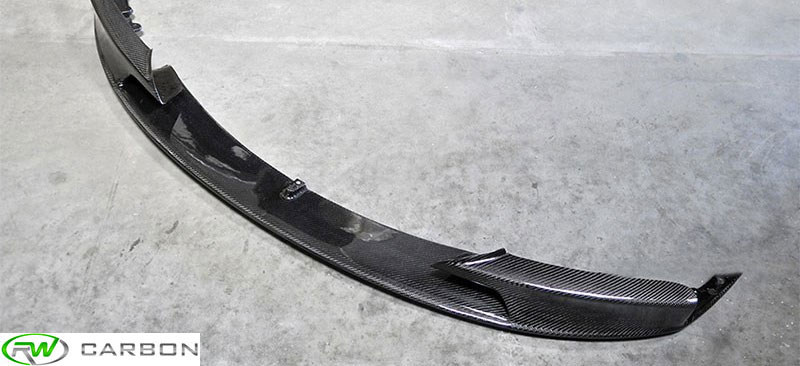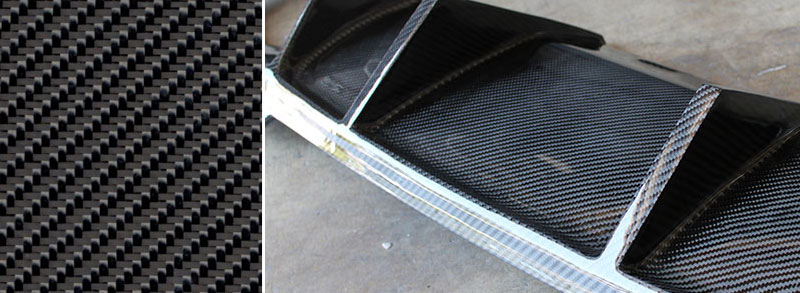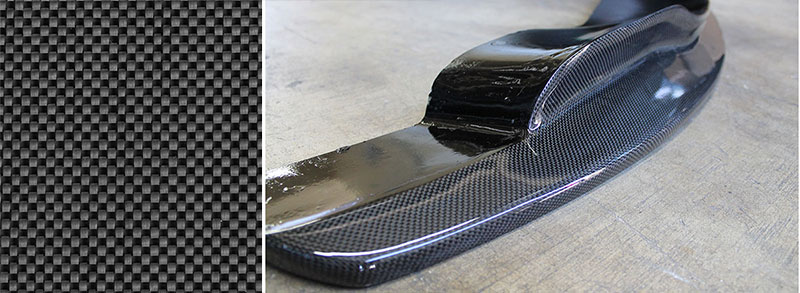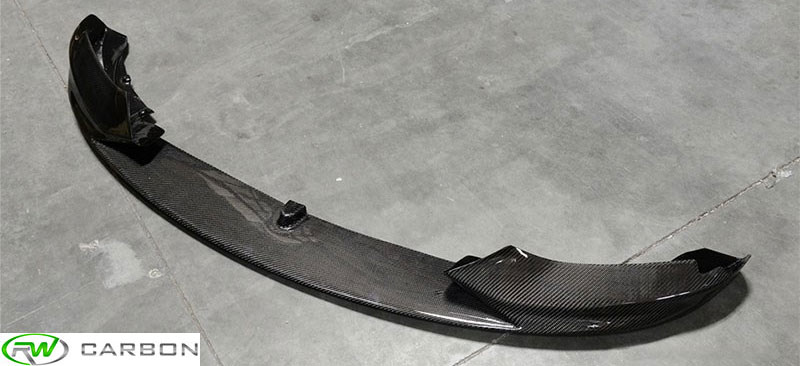A Guide to Understanding Carbon Fiber Weaves and Fabrics
Too many potential carbon fiber buyers are confused when it comes down to which particular type of carbon fiber is used over another. Lets first break down the different categories of Carbon Fiber Woven Fabrics..
1. 2×2 Twill Weave
The 2×2 twill weave is by far the most common carbon fiber fabric used in the automotive industry. This fabric type follows a distinct diagonal pattern. When you think about a 2×2 carbon weave look at it as a pattern that goes over two intersecting warps and under two (hence why it is called 2×2). This makes the fabric more pliable and looser. That means it can be applied more easily because it can be stretched to curves and contours with fewer complications. However, this also means the applicator needs to handle the weave more carefully than a plain or 1×1 weave as it is simple to leave slight distortions in the weave.
2. Plain (1×1) Weave
The plain or 1×1 weave is the second most used fabric type in the auto industry. As you would expect it is given its name (1×1) because it looks more like a checker board where the weave pattern goes up one and down one. Plain weave is then a tighter knit fabric and is easier to handle without making any distortions. On the down side the tighter weave makes it more difficult to drape the fabric over the mold; making this type a second favorite choice for most manufacturers.
RW Carbon offers both carbon fiber weaves in certain items we sell. The majority of products only come in 2×2 twill weave but for our BMW M3 and M6 owners we offer 1×1 or 2×2 which give them the option to match their carbon fiber roof.
Other or Less Common Weaves
The majority of carbon fiber parts and accessories are made using these two types of weaves mentioned above. However, there are others out there such as: Satin weave, harness weave, fish weave and unidirectional. All of these are just different weave patterns for carbon fabric. In almost every automotive application 1×1 or 2×2 weave is superior in looks and construction which is why you rarely will hear these other weave types. Only custom or unusual carbon fiber requests will require weaves like these. Unidirectional weave is where almost every fiber is aligned in the same direction. This kind of weave is only held together by the occasional strand of either carbon or polyester running across the fibers at a 90 degree angle. This kind of carbon fiber is best used where all the force is aligned in one direction, such as in an archery bow and arrow.
Unidirectional Carbon Weave
So which weave pattern makes for the strongest fabric?
Contrary to popular belief, the 1×1 or plain weave is actually weaker then the 2×2 or a 4 harness satin weave (4×4). This is because as the carbon fibers are put under strain or tension, the fibers want to pull straight but cannot due to the repeat of the pattern. Each fiber is forced over and under one another. Therefore, that tension will eventually shear apart the fabric, leaving a 2×2 with more tensile strength than a plain weave.
Now that you have an understanding of carbon fiber weave types, next is to discuss the major types of carbon fiber cloths. In the auto industry there are 2 popular types of cloth, wet and dry prepreg.
1. Wet Prepreg Cloth
Wet pregreg cloth is the most popular method for carbon fiber Front Lip Spoilers, Rear Diffusers and Trunks because it tends to be easier to manufacturer. All that is needed is a precisely measured amount of resin or epoxy that is then poured over the fabric, making the fabric “wet”. This type of carbon can either cure in room temperature or like most they need to be baked.

BMW F30/F31 M Sport BMW Performance Style Front Lip Spoiler in Wet Prepreg Carbon Cloth
2. Dry Prepreg Cloth
The dry prepreg cloth or otherwise known as “Dry Carbon” is very similar to wet prepreg as they both utilize resin or epoxy to adhere the fabric. However, unlike the wet version, the epoxy used for this cloth type has dry properties and is impregnated into the cloth. This step guarantees there is no excess epoxy, which gives it that “Dry” appearance (Most of our products are then given a clear coat to protect the weave). This method requires further steps to be taken; each layer needs to be “squeeged” and the amount of resin used must be very precise or the item will become too tacky. Once the aero parts are molded it requires baking for several hours at a temperature of 250 degrees Fahrenheit. This is why dry carbon parts and accessories tend to be more expensive when compared to wet carbon cloth.
BMW F32 M Sport BMW Performance Style Front Lip Spoiler in Dry Prepreg Carbon Cloth
Why would I pay more for a Dry Carbon Aero Piece?
The answer is quite simple. Dry carbon is able to create the same tensile strength as wet carbon fiber but it weighs substantially less. So for all your auto enthusiast looking to track your car and shed some weight, dry carbon is a must!
If you have any further questions about carbon fiber weaves or fabric please email RW Carbon at info@rwcarbon.com
Recent Posts
Post Categories
- Apparel (2)
- Audi (6)
- BMW (539)
- C190 GTC (2)
- Carbon Fiber Education (6)
- Company Updates (14)
- Events (10)
- F80 M3 (15)
- F87 M2 (5)
- F90 M5 (5)
- F95 X5M (1)
- Ferrari (2)
- Industry News (18)
- Jeep (2)
- Mercedes (199)
- Porsche (3)
- Product Announcements (1)
- Project Cars (30)
- Promotions (5)
- RW Signatures (5)
- Sliplo (1)
- Tesla (10)
- Uncat (30)
- W205 C63S (9)
RW Carbon
(714) 328-4406
Monday – Friday: 8am-4pm
Saturday & Sunday: Closed




